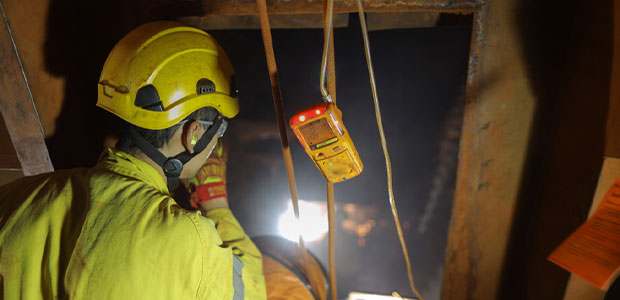
Smart Confined Space Monitoring - Systems Innovate
Severe temperatures, poor ventilation, toxic gasses and extreme darkness – these are all common working conditions when operating in confined spaces. It’s understandable then that sound safety procedures and protocols are paramount to those hard-working professionals who count Confined Space Entry (CSE) among their everyday or even just occasional job responsibilities. By utilizing advanced monitoring technology, companies can see improved safety, increased productivity and reduced overall costs during confined space operations.
The risks of working in and around confined space areas are well-known. Conventional practices require a safety attendant to be in close proximity to observe workers entering and performing work within the space. Despite the presence of an attendant and well-documented procedures, however, injury and even death can still occur. A safer, more effective approach would be to monitor the confined space from a centralized location to avoid putting additional workers near the hazardous area.
During any CSE operation, a fully engineered monitoring system equipped with innovative technology can optimize the level of safety supervision in and around the confined space by allowing skilled professionals to remotely observe real-time video footage of work being conducted in the hazardous area. This ensures exponentially safer operations at a reduced cost.
To deliver optimal safety performance and meet OSHA standards, a robust monitoring system should also include gas detection, 24/7 video coverage, access control, two-way communications and alarms. Most importantly, the entire system must be monitored by highly qualified, highly trained professionals.
Gas Detection
Most standard gas detection units are equipped with LEL, O2, H2S and CO monitors, but a variety of other sensor options are available for custom needs. Units are also equipped with a strong sampling pump so that drawing samples from a hazardous atmosphere with the gas detection unit can be simple and seamless. Ideally, the system should be wireless and flexible and include loud audible and visual alarms that can easily be seen or heard in any environment.
Gas detection units will transmit readings and alarms to any remote location, including an operating command center where personnel are monitoring the space.
Video Monitoring
One of the most integral operations of the system is the constant delivery of video content. High-definition cameras are strategically placed to properly monitor both the interior and exterior of the space and provide a visual sightline to areas where direct supervision is limited or obscured by the physical configuration of the plant. Moreover, the cameras function 24/7 to provide maximum visibility in any conditions, including dark, dusty environments.
Access Control
An integrated badge system ensures controlled access into designated areas. Daily programming of the system tracks current permit status to prevent workers who do not have up-to-date access from entering a prohibited area – a visual and audible alarm alerts both the worker and the operator that access was not approved.
Communication & Alarms
A push-to-talk two-way communication system should be positioned inside and outside of the confined space. This adds an extra level of safety by allowing operators to maintain constant communication with workers at entry/exit points. Industrial IP intercom technology with noise cancelling capability allows clear communication even in loud environments. Visual and audible alarms alert workers to imminent dangers and warn them to immediately leave a tank, vessel or other confined space.
Professional Staffing
Perhaps the most important aspect of a monitoring system is that it be operated by fully trained confined space safety experts with the ability and knowledge to respond quickly and efficiently to any situation. They can provide an extremely high level of supervision and support, making your business safer than ever before. In addition to the high level of skills and training, the team of individuals supporting a project should understand the high demands of a successful operation and work to ensure a smooth completion – on time and on budget.
When Operations Call for CSE, Companies Should Call for a Confined Space Monitoring System
Employing a confined space monitoring system during an intricate CSE operation can provide facility managers peace of mind by increasing the safety and efficiency of the project and minimizing the risk of extended downtime.
When planning a CSE operation facility managers should look for a solution that has features and benefits similar to that below to ensure a safe and successful project.
- With a compact, mobile design and a stand-alone power source, the system has a minimal onsite footprint, and can be moved quickly and easily for a non-intrusive set up at each CSE location.
- The system also provides wireless communication back to a central command center.
- Integrated software allows incoming data from monitoring components to be recorded and provides operators a timestamped record of activity.
- The system can create reports that track worker locations and movement history, all while documenting gas readings and any audible or visual alarms activated during the project. If an incident occurs, this documentation can be used for accountability and future safety improvements.
- Most notable, Dräger provides highly trained operators and technicians to support its system to deliver a reliable, OSHA-compliant solution for confined space monitoring.
- Delivers integral cost savings by minimizing the number of safety officers and confined space entry attendants needed on a site.
Whatever confined space monitoring system a facility employs, a well-designed solution should provide peace of mind because it promises to make CSE operations run safer, smoother and smarter.